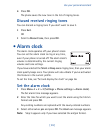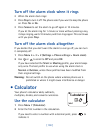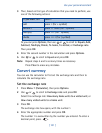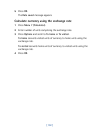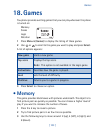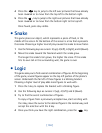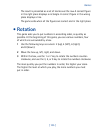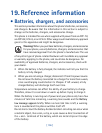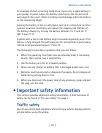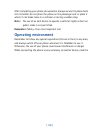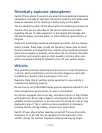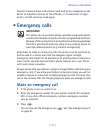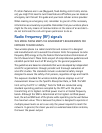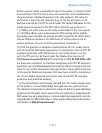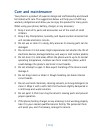[ 107 ]
Reference information
An example of short-circuiting could occur if you carry a spare battery in
your pocket or purse, where the battery could come into contact with
such objects like a coin. Short-circuiting could damage either the battery
or the connecting object.
Leaving the battery in hot or cold places, such as in a closed car in either
summer or winter conditions, will reduce the capacity and lifetime of
the battery. Always try to keep the battery between 15° C and 25° C
(59° F and 77° F).
A phone with a hot or cold battery might not work temporarily, even if the
battery is fully charged. The performance of Li-Ion batteries is particularly
limited in temperatures below 0° C (32° F).
The following list provides a guideline that you can follow:
• When the operating time (talk time and standby time) is noticeably
shorter than normal, buy a new battery.
• Use the battery only for its intended purpose.
• Never use any charger or battery that is damaged and/or worn out.
• Batteries must be recycled or disposed of properly. Do not dispose of
batteries by putting them in fire!
• When you disconnect the power cord of any accessory, grasp and pull
the plug, not the cord.
• Important safety information
This section provides additional safety information. A brief overview of
safety can be found in “For your safety” on page 1.
Traffic safety
Do not use a hand-held telephone while driving a vehicle. Always park the
vehicle before using the phone.



